Felsenmeer (sea of rock)
The term felsenmeer comes from the German meaning “sea of rock” or blockfield and is a surface covered by block-sized angular rocks. The freeze-thaw weathering has broken up rock formations, which occurs when water that is trapped along microcracks in rock expands and contracts due to fluctuations in temperature above and below the freezing point.
Lindenfels
Lindenfels is a town in southern Hesse, Germany and known as the “Pearl of the Odenwald”. In the middle of the town stand the ruins of the Lindenfels castle with a great view into the distance over the Weschnitz valley.
Reichelsheim
Reichelsheim is a community in Hesse, Germany. It is located in the middle Odenwald and was first mentioned in 1303. The Schloss Reichenberg (Richenburg Castle) was first mentioned in 1307 and was used as a private upperclass boys’ school from 1876 to 1924. Nowadays, it is a publicly accessible international meeting and conference centre with a palace café.
Fürstenlager
The Fürstenlager was built around 1790 by the landgrave and grand duke of Hesse-Darmstadt in Bensheim-Auerbach, Germany. The park includes over 50 exotic trees and bushes, e.g. the 150 years old giant redwood and a multitude of different buildings in the back.
Darmstadt – Waldkunst
The first sculptur is named “Time Bomb” from Ernest Daetwyler and is placed in the forest near the US army base in Darmstadt. The whole work is built from wooden elements found around Darmstadt: chairs, beds or tables… Everything returned to the point of their origin.
The second installation is 30qm big and is named “A little spider can build much more complex things” from Elena Redaelli.
Berlin
Berlin is with a population of 3.45 million people the largest city of Germany and is the residence for over 190 nations. The city is the home of renowned universities and research institutes. Furthermore, Berlin shelters great culture, like museums, orchestra and sporting events. The city is famous for the diverse architecture, nightlife and contemporary arts. Its unique and urban settings,plus historical legacy have made it a popular location for international film productions.
Need a bike?
The bicycle sharing system makes numbers of bicycles available as a mobility service in different german cities.
Berlin – Potsdamer Platz
The Potsdamer Platz is a public square and traffic intersection in the centre of Berlin, Germany and the history can be tracked back to the year 1685.
In 1924 one of the first traffic lights in Continental Europe were built at Potsdamer Platz in an attempt to control the sheer volume of traffic passing through. More than 100.000 people and more than 60.000 cars, horse-drawn vehicles, handcarts and bycicles passed the place daily.
During World War II almost all of the buildings around Potsdamer Platz were turned to rubble by air raids and heavy artillery bombardment, but commercial life reappeared in the ruins around Potsdamer Platz within just a few weeks of war’s end.
1961, the construction of the Berliner Wall found the Potsdamer Platz physically divided in two peaces and became totally desolate. Only two buildings in the immediate vicinity of Potsdamer Platz still stood in the east part of Berlin. Below ground, the S-Bahn line remained open, without stopping at Potsdamer Platz. Therefore, the trains briefly passed through East German territory en route from one part of West Berlin to another and the S-Bahn station became the most infamous of several Geisterbahnhöfe (ghost stations).
After the opening of the Berliner Wall in 1989, Potsdamer Platz was one of the first places to cross the border between East and West Berlin. Nowadays, the square became the focus of attention again and became the key area where the city had an opportunity to express itself.
Wartburg
The Wartburg is situated near Eisenach (Thuringia) and was founded in 1068 by the count of Schauenburg. In 1207 the castle became the venue of the Sängerkrieg (Minstrels’ Contest) in which Minnesänger (Walther von der Vogelweide or Wolfram von Eschenbach) took part and was treated with poetic licence in Richard Wagner’s opera Tannhäuser.
From May 1521 until March 1522, Martin Luther stayed at the castle after his excommunication by Pope Leo X and translated the New Testament into German, the first translation into a modern language.
In 1817, about 450 students came together and called for German unity. This and similar events at Wartburg during the Revolutions of 1848 are considered seminal moments in the movement for German unification.
The Landgrafenhaus (romanesque palace) is the oldest building and contains the Sängersaal (Hall of the Minstrels), which is the setting for Richard Wagners Tannhäuser.
Künstlerkolonie, Darmstadt
These photos were taken in Darmstadt (Hesse), Germany.
The artists’ colony “Mathildenhöhe” was founded in 1899 by Ernest Ludwig, Grand Duke of Hesse and the first exhibition of the artists’ colony took place in 1901. Ernest Ludwig motto was: “My Hesse should flourish, and the art in Hesse too” and he brought together several artists of the Art Nouveau (Jugendstil) in Darmstadt: Peter Behrens, Hans Christiansen, Ludwig Habich and Joseph Maria Olbrich.
